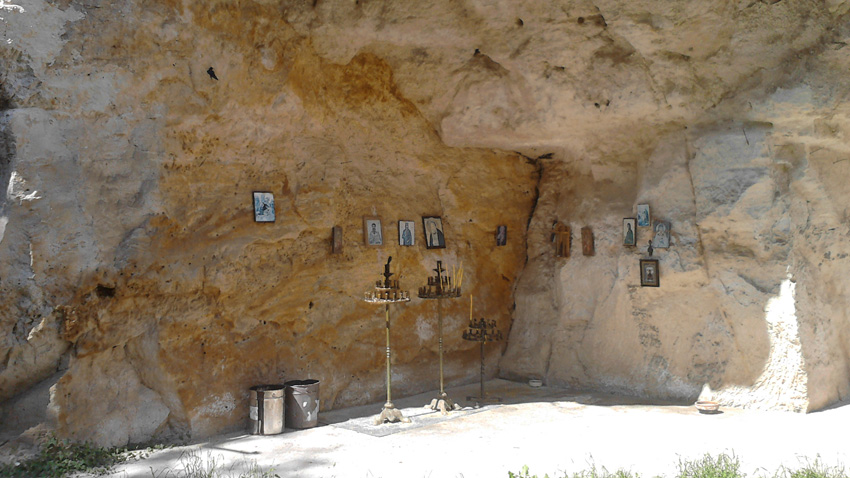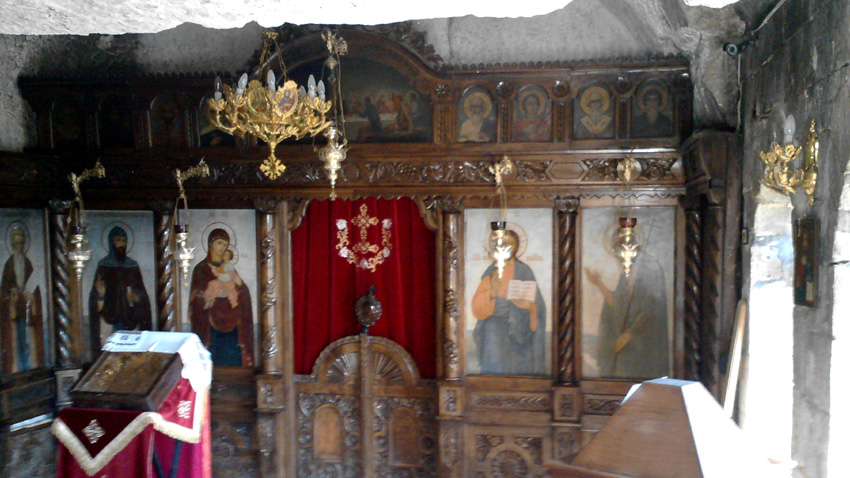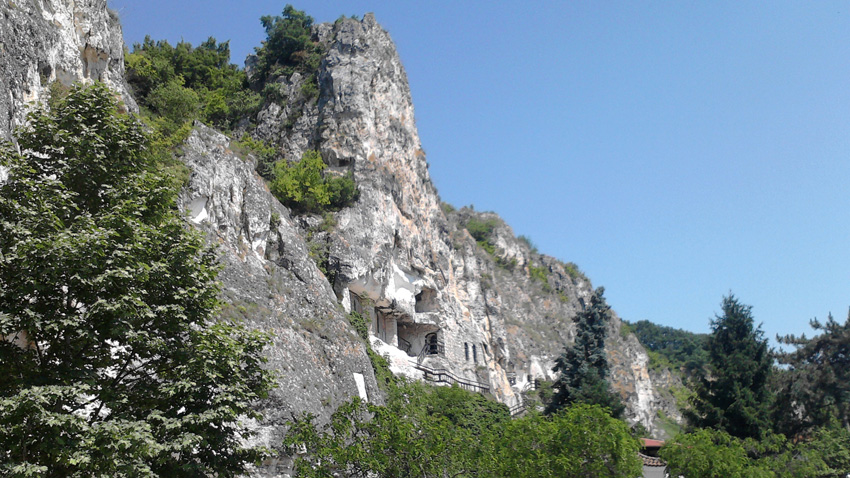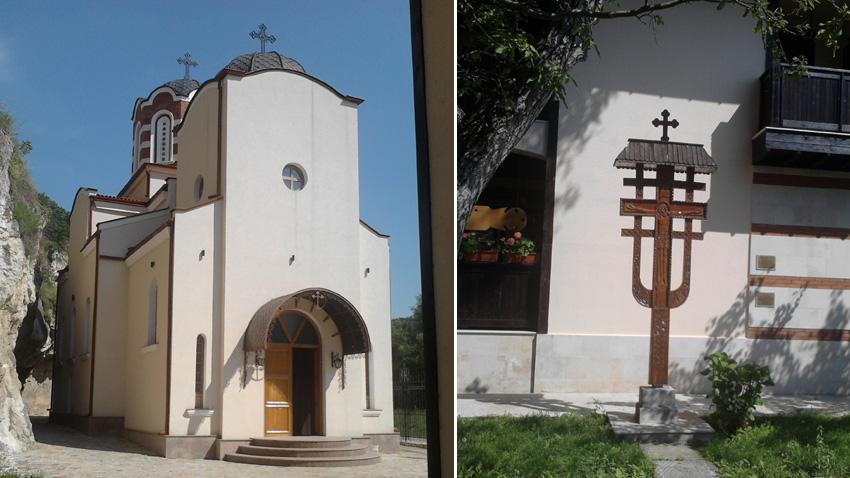The area of North-East Bulgaria is full of numerous rock-hewn monasteries, dated back to the Medieval Ages. Carved up high among inaccessible limestone cliffs, those spots were used for solitary confinement and the talk with God. Nowadays the proclaimed monuments of culture are not active sanctuaries. The St. Dimitar Bessarbovski Monastery is the only acting stone-hewn monastery in Bulgaria at the moment and it can be found along the Lom River, close to the village of Besarbovo. Head of the Regional Museum of History in Ruse Prof. Nikolay Nenov explains why there are so many rock-hewn monasteries in this country.

“One of the main reasons for turning caves into temples was the religious one. A popular Medieval text reads: ‘Whoever has a cave will save his soul’, i.e. we have this special sophisticated concept for salvation via the availability of your own cave – temple, in this case. Next come the limestone areas with the opportunity to carve into the rocks provided. However, faith comes main and first, as no one could live without it back in the Medieval ages.”
Prof. Nenov says on the earliest historical data for the existence of the Bessarbovo Monastery:
“Researchers’ analyses testify on human presence in these caves yet during the first decades of Bulgarian Christianity – the 9th c. AD. We see images of deer, suns, small inscriptions and crosses. These are the so-called graffiti drawings, known to researchers, as some of them are considered to have pre-Christian origin, while others are dated back to the Christian period. As early as the first decades after the adoption of Christianity, there have been rock-hewn churches on the place where the Bessarbovski Monastery no stands. Later, perhaps, a monastery was also inaugurated on the premises.”

Who are the researchers of the monastery and when did they act?
“Karel Škorpil was one of the most famous researchers – the Czech – Bulgarian, who set the basis of Bulgarian archaeology. Then, later on it was Prof. Todor Mollov from VelikoTarnovo University, who made analyses of the monastery’s everyday life and also of St. Demetrius, of course.”

Prof. Nenov says that there are no original murals in the church and explains that in late 19th c. Karel Škorpil found only plain and empty caves. It was Monk Hrisan, who in 1937 came from the Plakovski Monastery, restored the temple and the murals and icons appeared next.
Prof. Nenov explains the role of the Bessarbovo Monastery in the past:
“The temple has this special place in Bulgarian history. It is part of a series of monasteries along the Rusenski Lom River. The Ivanovski Rock-hewn Churches is one of the most famous monasteries from the region. We are talking here about a patriarchal monastery with scriptoriums – places for rewriting and writing of books by intelligent people, living inside. The dozens of inscriptions on the walls of the ancient cells testify on that. As a result of the wedding of Ivan Alexander, later to become King of Bulgarians, with Wallachia’s Princess Teodora, her father – Ivanko Bessarbovski donated a monastery with a village as part of his daughter’s dowry. The monasteries in the Medieval times were the only true feuds in the Bulgarian lands – i.e. they had their own villages with people working for them and their maintenance. The arrival of that Wallachia family of Bessarab also brought the name of the village and the monastery. Then it was an acting monastery as of this point up till the end of the 16th c.”

The Bessarbovski Monastery has been proclaimed an archaeological monument of culture. Still, there are no visible archaeological artifacts inside, the professor resumes. The place is precious for its rock-hewn architecture, which makes it extremely important. It has been renewed through time and new premises have been built. Donations played the main role in the past for the development of the monastery and the situation is similar today, Prof. Nenov explains – the new church inside and the new spaces and premises come as donations of numerous Ruse citizens and families and also with the support of the state, as the donation inscription reads.

English version: Zhivko Stanchev
Many citizens of Sofia took advantage of the opportunity to see the Enina Apostle and the Argirov triod manuscripts which were exhibited today for two hours at the National Library "St. Cyril and Methodius". The event took place on the..
On the eve of St Athanasius' Day, one of the churches on the outskirts of Sofia is already preparing to welcome His Holiness the Metropolitan of Sofia and Bulgarian Patriarch Daniil , who this year will celebrate the Divine Liturgy in the church in the..
Atanasovden, also known as Midwinter in our folk calendar, is a holiday on which the Orthodox Church and our folklore pay tribute to St. Athanasius the Great – Archbishop of Alexandria and a fighter against Arianism (church heresy which rejects the..

+359 2 9336 661
